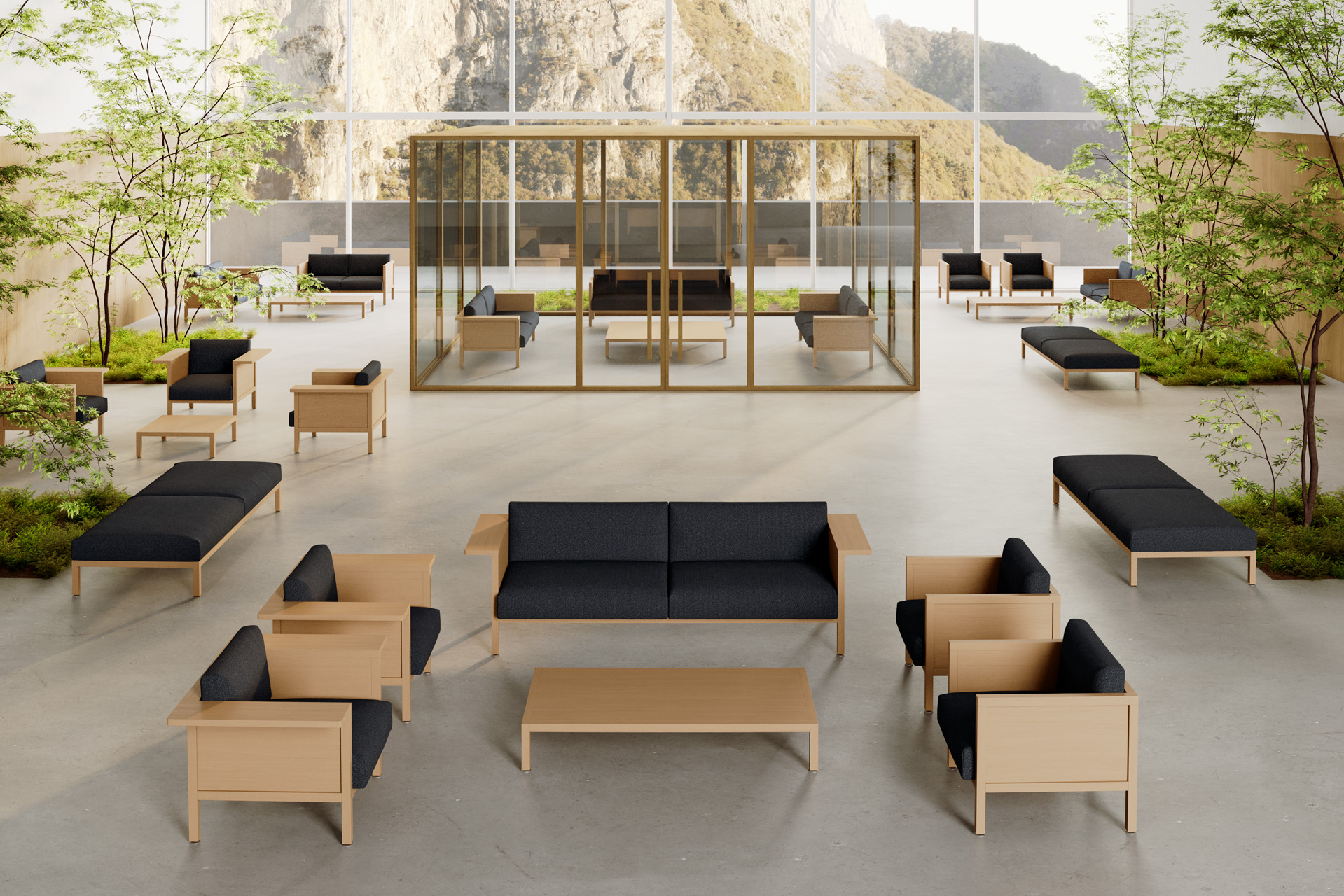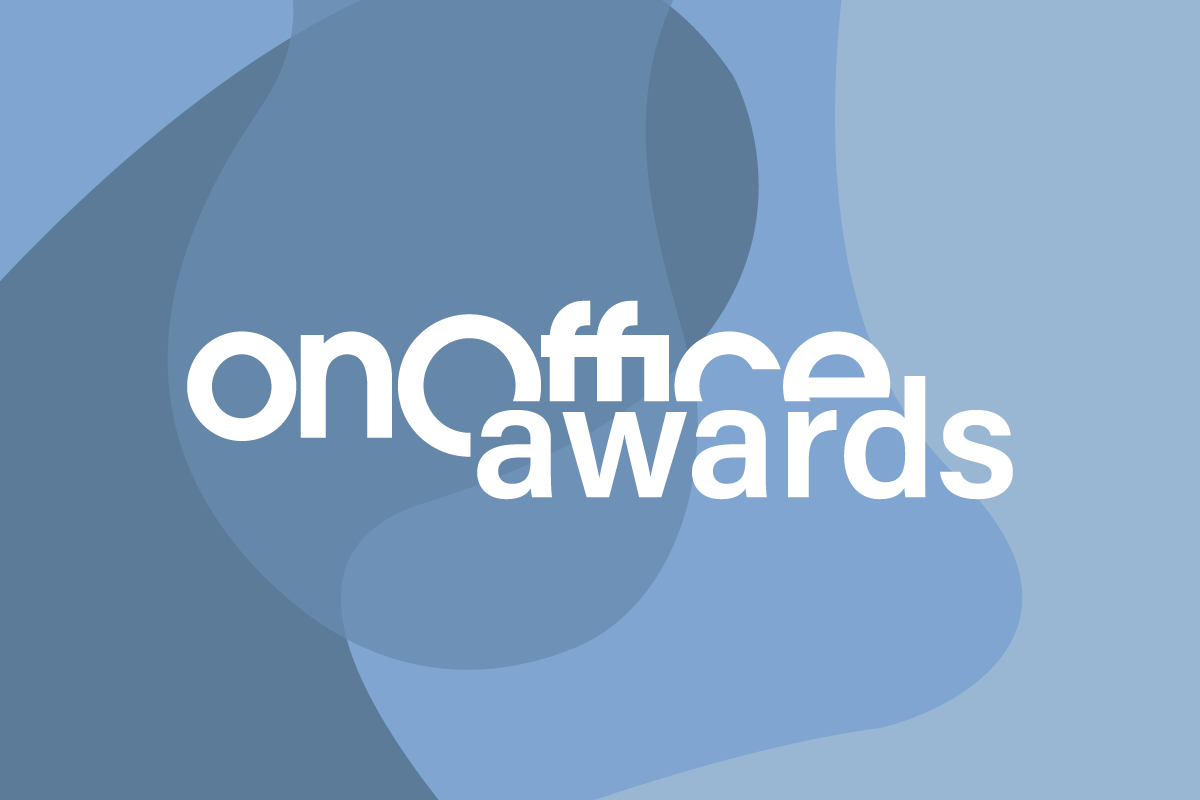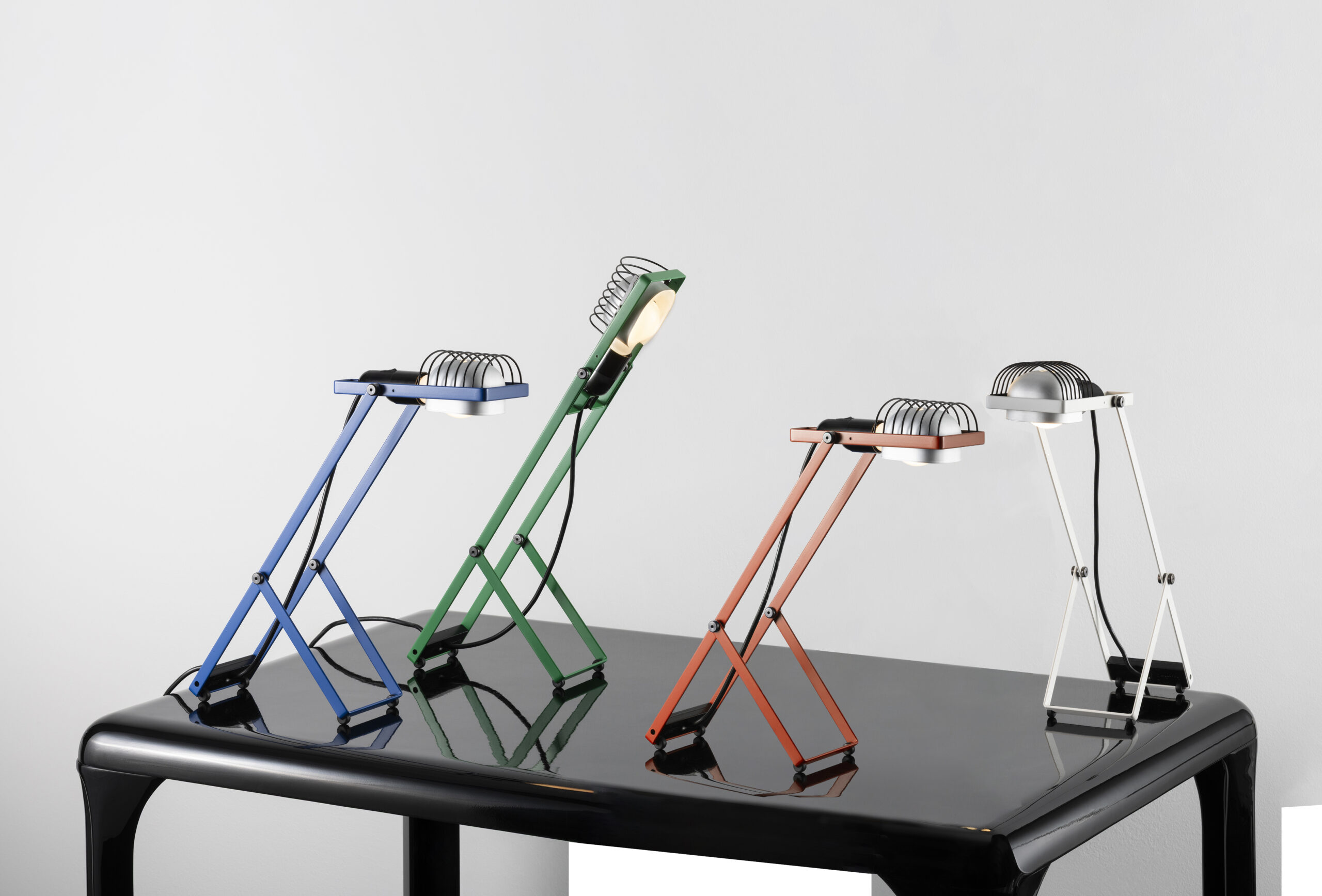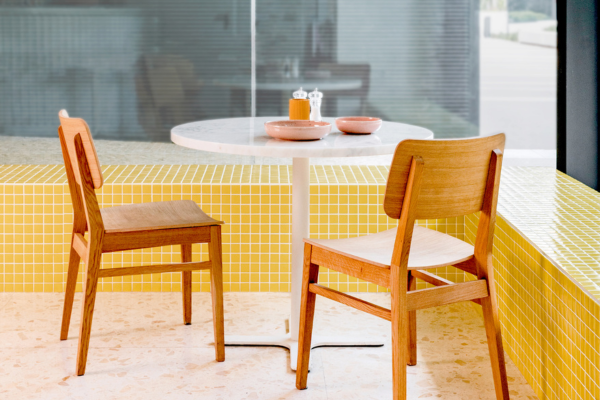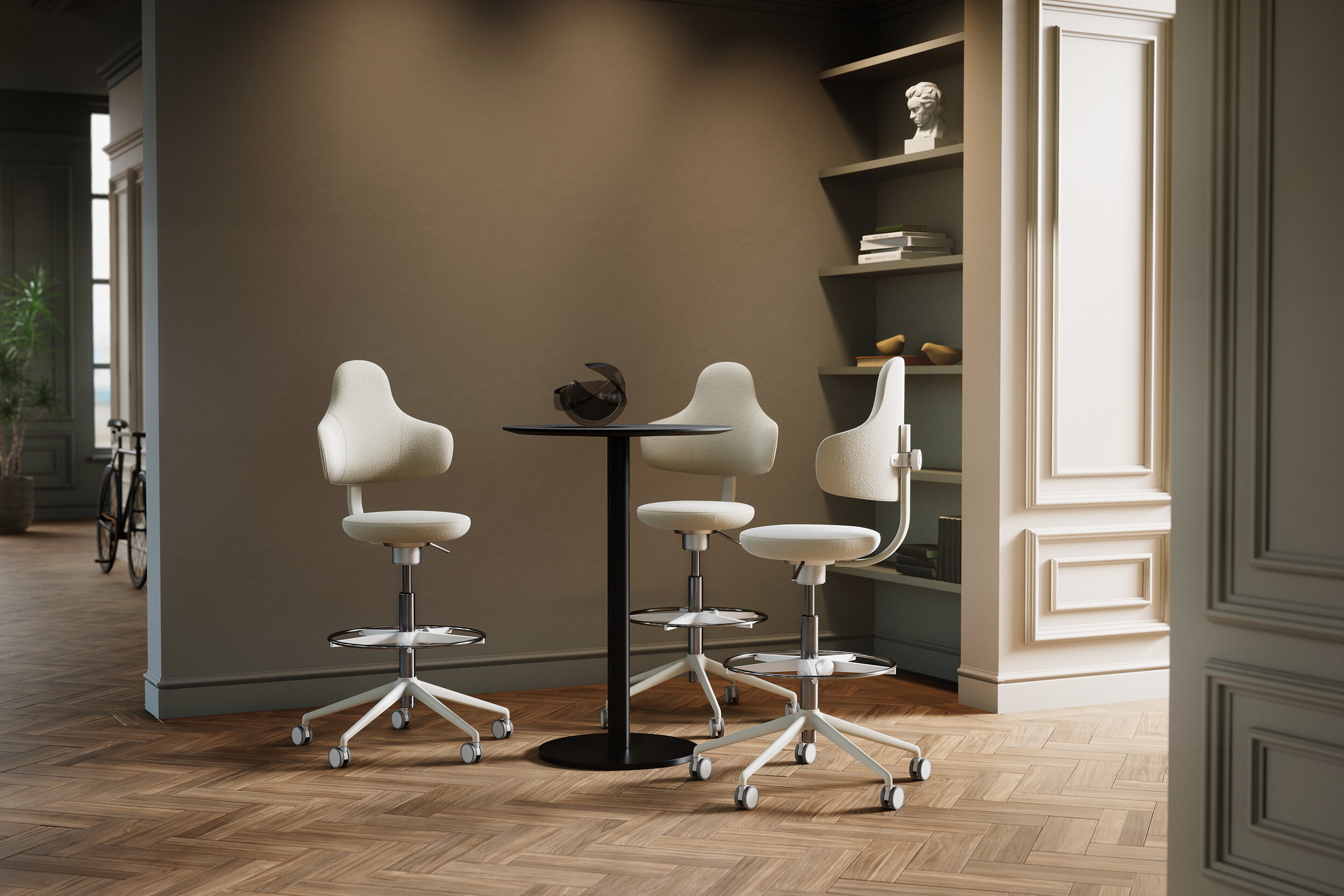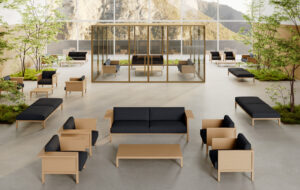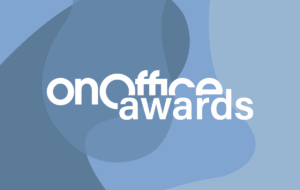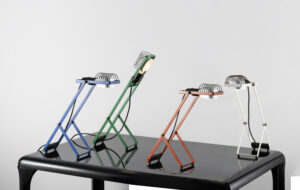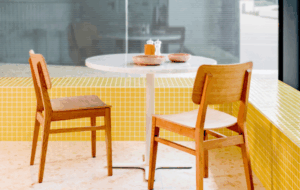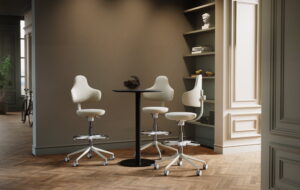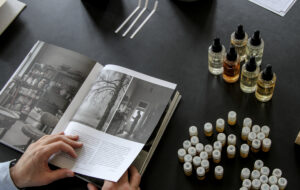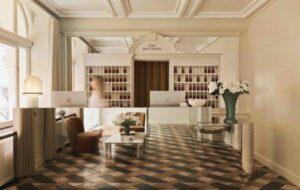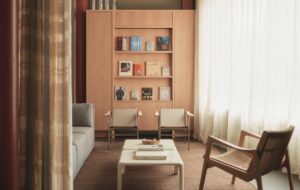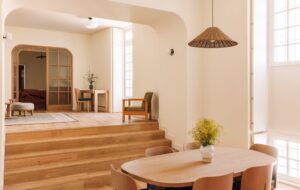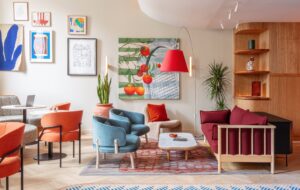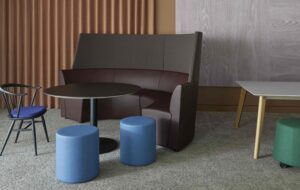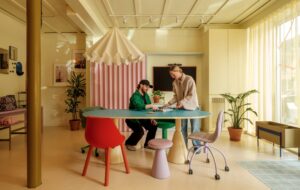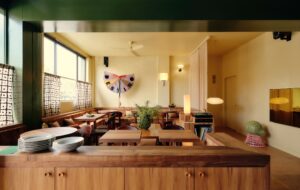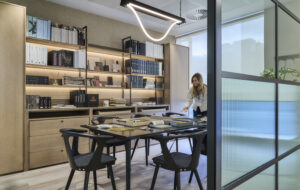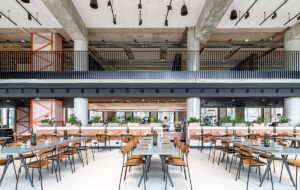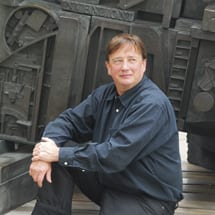
 Sebastian Conran has design pedigree running through his veins. After studying industrial design engineering at the Central School of Design, in 1979 he joined branding giant Wolff Olins, and three years later moved to Mothercare to design and develop its merchandise. In 1999, he merged his design studio with the Conran Group to form Conran & Partners, where he is now the director responsible for all product and graphics work.
Sebastian Conran has design pedigree running through his veins. After studying industrial design engineering at the Central School of Design, in 1979 he joined branding giant Wolff Olins, and three years later moved to Mothercare to design and develop its merchandise. In 1999, he merged his design studio with the Conran Group to form Conran & Partners, where he is now the director responsible for all product and graphics work.
In June, the division was rebranded – with new graphics and logo – to Studio Conran, putting the focus back on to the area of expertise it offers.
“Conran & Partners is a very architectural name, and for property developers, having everything [architecture, interior, graphics and product design] under one roof sometimes almost clouded the issue,” explains Conran.
Studio Conran, right now, has a lot on its plate. Kitchen and garden equipment, as well as projects focusing on storage, technology, home entertainment and mobile phones, off the top of Conran’s head. They are so busy that Conran admits that they haven’t yet had a chance to design their own brochure.
Evidence of prototypes and projects in progress fill the shelves of his office space. “We are working on an ultra-portable communication device. Details of it are confidential,” reveals Conran, as a nearby member of the studio team burrows away at the project. It is due to be launched by Christmas – so watch this space.
Meanwhile, the new Tactile for British Ceramic Tile range – “the first time we have done tiles”, according to Conran – is causing quite a stir in the contract market.
This is clearly a design studio hungry to take on any product, from computers to cars – Conran drives a car model that was a collaboration between Nissan and Conran & Partners – and apply its own dose of design excellence.
But it isn’t new devices or launches that bring me to the Conran studio, which is just behind the Design Museum – funded and founded by Sir Terence Conran– on the south bank of the Thames. It is an initiative to which Sebastian Conran has been recruited, through the Home Office and the Design Council – the Design Technology Alliance.
Joining Conran on the board are Lorraine Gamman, director of the Design Against Crime research centre at Central Saint Martins School of Art and Design; David Kester, chief executive of the Design Council; Gloria Laycock, professor of crime science at UCL; Joe McGeehan, director of communications research at Bristol University; Ken Pease, former head of the Police Research Group at the Home Office; Jeremy Myerson, professor of design studies at the Royal College of Art; John Sorrell, chair of the Commission for Architecture and the Built Environment (CABE); Michael Wolff, co-founder of brand consultancy Wolff Olins; and Paul Stephenson, deputy commissioner of the Metropolitan Police.
Paul Stephenson and John Sorrell have been knighted since the board was drawn up, Conran notes, while Gloria Laycock has just received an OBE; so it is “a bit of a winning team”.
The team is a third of the way through a three-year strategy pioneering a convergence of social awareness and design – “a systematic approach to design where problems and solutions are anticipated and addressed effectively”, Conran explains.
“We need to engender a predictive use of crime design, systemic in all UK business, and considered in every aspect of the business environment, business processes and product development,” he adds.
A growing crime problem, for example, is registration-plate fraud. “It doesn’t sound like much of a problem, until someone steals your registration plate and you start to get speeding tickets and congestion charges through,” Conran points out.
“With the increasing cost of petrol, Range Rovers and big cars are driving into petrol stations, filling up and driving off – and then removing the false plates.” This was a problem initially flagged up by the Serious Organised Crime Agency.
Similarly, more than a quarter of London’s disabled-parking permits are fraudulent. “This makes it very unpleasant if you are disabled, first because of the danger that your car will be broken into, and second because you are getting harassed about whether you are really disabled or not,” says Conran. “A simple thing is to have permits that stick to your windscreen that, in the same way as price stickers in a supermarket, disintegrate when you try to take them off. That way, they can’t be sold down the pub.”
And then there is the vulnerability of laptop computers, which are the reason why so many offices and homes are broken into. “One of the ways to make something not worth stealing is by making it traceable,” says Conran. “If it is traceable, it is untradeable – and therefore undesirable to thieves. A simple way of doing this is to have your name and mobile phone number on the back of your computer or iPod [Conran has his name and number inscribed on both]”.
Radio frequency identification (RFID) chips are “a simple way of using design and technology to combat theft”, says Conran. “If every piece of electrical equipment had an RFID built into the master chip, if it is stolen, you can lock it and make it useless. If you build RFID bricking into every laptop, then people can’t steal the information, and they can’t trade the laptop. So there is a lot less reason to break into places to steal them.”
One of the main issues on the alliance’s agenda is the current climate of intimidation in society. And this is a problem that they believe can be tackled by design. “Bus shelters are a crime just waiting to happen,” explains Conran, showing me the prototype of a London bus shelter they “designed earlier”.
Stripy glass, which deters graffiti artists, dimpled surfaces that can’t be scribbled or flyposted on, inbuilt CCTV cameras and a Transport for London intercom, for safety and communication, combine to create a crime-repellent structure. “This would be built from energy-absorbing material,” says Conran. “If a car careers off the road, as they frequently do, it would protect the people inside.”
Alcohol-related violence and knife crime are two other social problems under “design” scrutiny. “Why is it that people are prepared to drink Coca-Cola from a plastic bottle, but not beer?” asks Conran. “This is a design issue. You go down to a club such as Fabric [in London], all the drinks are served in glass bottles, which are potentially lethal weapons. All it takes is a kid who has drunk too much and who is being intimidated.
“A third of all homicides in the UK involve a knife. When we are designing kitchen knives, the last thing we are thinking about is whether it will be used in domestic violence.” John Cornock has designed a stab-resistant knife blade, and the alliance is assisting in getting it into production.
Fraud costs the UK economy about £17bn a year. “There are a dozen visible things on a banknote that you can check and dozens more invisible things that machines can check,” says Conran. “Technology is now embedded in scanners, for example, to recognise banknotes, to stop you scanning or photocopying them. A banknote is very good example of how design and technology can come together to prevent fraudulent crime.”
A lot of what Conran proposes is very simple technology, applied sensitively, and non-invasively, so as not to reduce quality of life.
The ethic is also to be anticipatory; seeing likely problems created, for example, by all schoolchildren working on laptops. “You ask whether there is going to be a massive trade in laptops and how do we head this off,” says Conran.
The issue of surveillance is something he views from many angles. “Does having CCTV cameras all over the place increase or reduce the fear of crime? Does it make people feel safer, or remind them that it might not be a safe place?”
Having read pretty much everything George Orwell had written by the time he was 18, Conran is well aware of the issues of the Orwellian nightmare, which “may be a Faustian pact that we have to pay to have the society we live in”, he considers.
Addressing crimewaves and making cities safer sounds a Batman-esque venture, but Conran is firmly armed with a designer’s methodology, rather than a mask and cape.
“We are researching problems, identifying solutions and then implementing them,” he says. “There are thousands of problems, thousands of issues and thousands of solutions, and it is about addressing them singularly.
“Social consciousness is a very important part of a designer’s make-up. You want to leave the world a better place. To improve quality of life, that is fundamental; there is no better way of doing it than reducing fear of crime, in a non-invasive way.”

